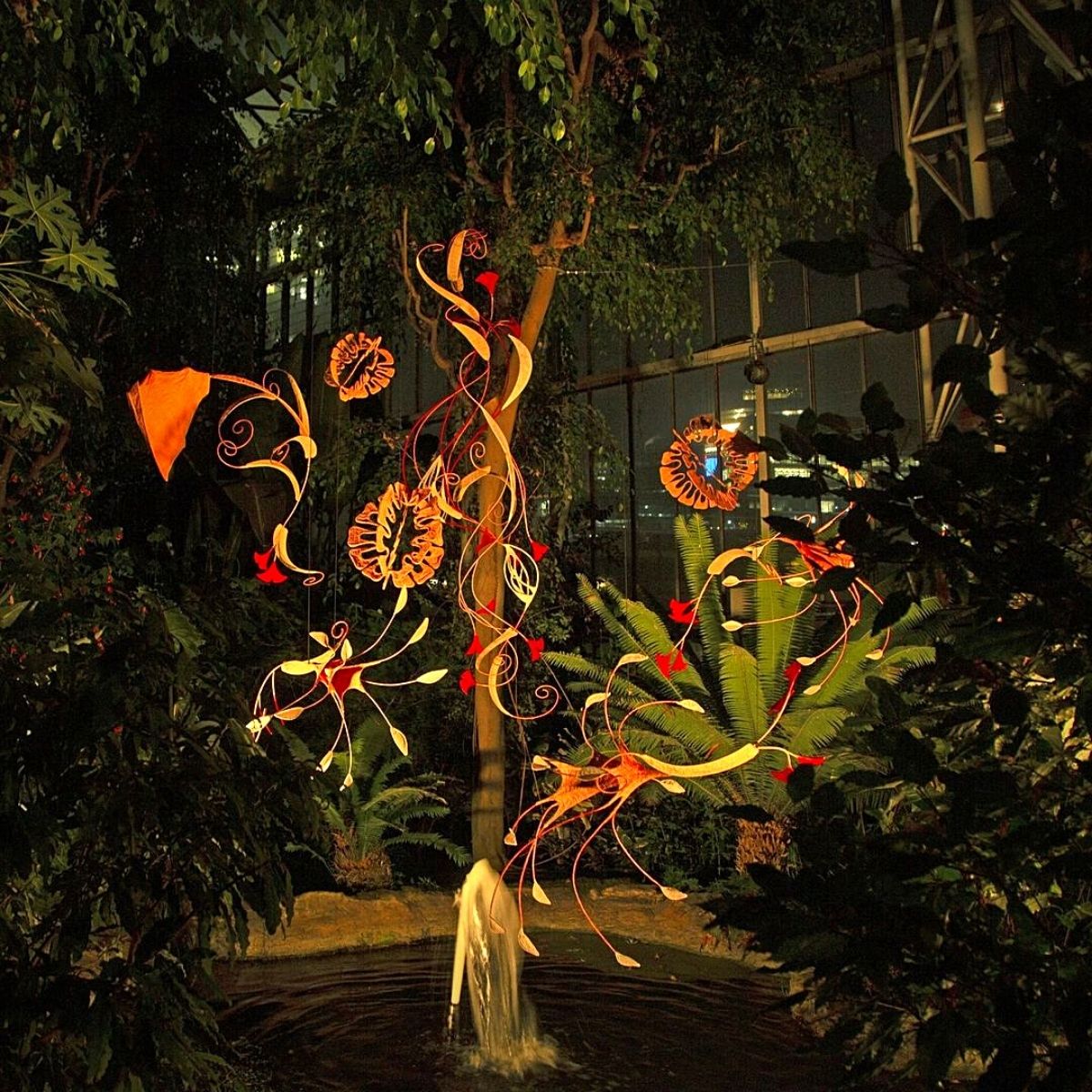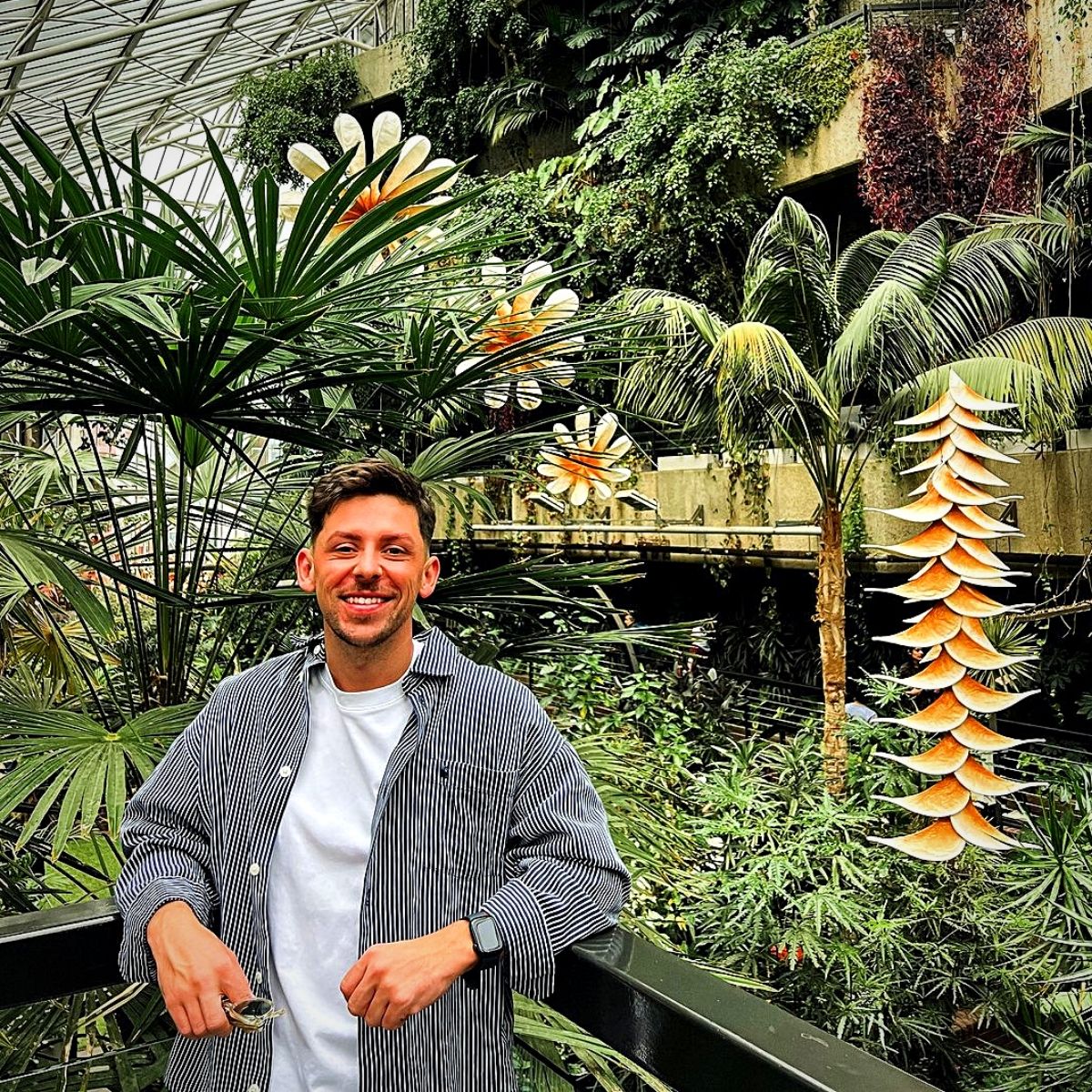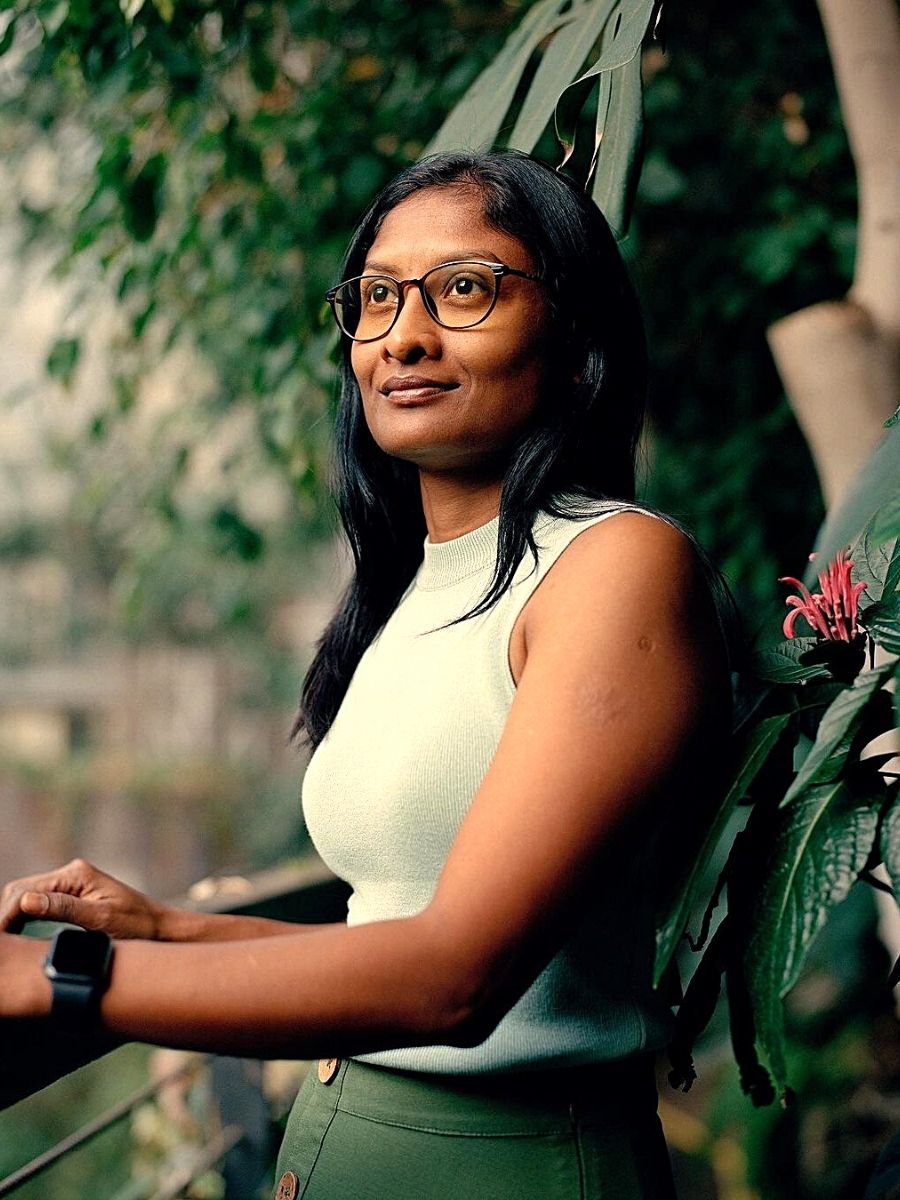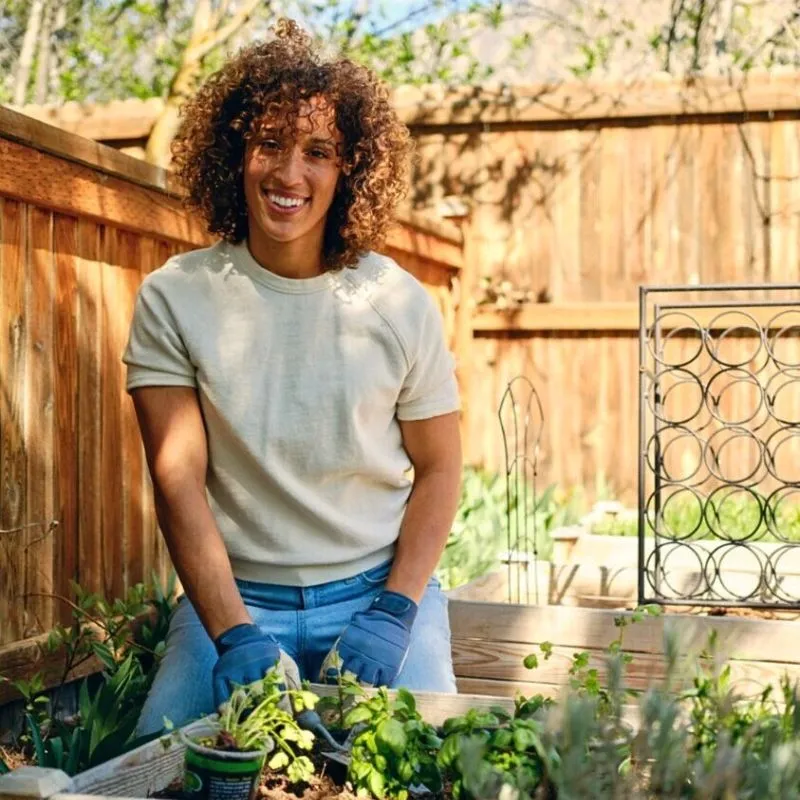Sculptor Ranjani Shettar may be known for making history as the first Indian artist to have a major presentation at the prestigious Barbican Conservatory in London. But it is her intricate, thought-provoking handcrafted sculptures that are captivating audiences. Drawing inspiration from nature, her intricate floral sculptures have garnered attention for their unique artistry and ability to create a harmonious dialogue between art and the natural world.
Shettar only just unveiled her latest installation titled ‘Cloud Songs on the Horizon', at the Barbican Conservatory in an exhibition that runs from September 10 to December 31, 2023. The installation features five suspended sculptures that draw inspiration from the 1,500 species of plants and trees housed in the conservatory. These sculptures effortlessly blend with the lush urban jungle of the Barbican's glasshouse.
A Fusion of Nature and Art
Shettar's sculptures at the Barbican Conservatory create a harmonious blend of nature and art. Working from her zero-waste studio in the remote town of Malenadu, a neighborhood in the state of Karnataka in India, she handcrafts each piece with keen attention to detail.

Photo by @londoncraftweek
Her sculptures, made from materials such as muslin and steel, interact with the surrounding plant life, often blurring the boundaries between the natural and the man-made. The artist’s works are known for their intriguing, abstracted, and often biomorphic forms that employ natural and man-made materials that also include beeswax, and draw creativity from traditional craft techniques.
In her installation, visitors are welcomed by the series of sculptures that intertwine seamlessly with the vibrant plant life within the conservatory. The set-up features otherworldly abstract sculptures that play with light to evoke a wondrous sense, more so when the sculptures sway gently in the conservatory

Photo by @leeyohss
The sculptures not only blend, almost, effortlessly with the Barbican's conservatoire but also challenge audiences to interrogate the boundaries between art and nature. Her use of natural materials, vibrant colors, and intricate detailing also creates an agreeable feel, coupled with reciprocity between the elements used.

Photo by @xiting_huang_design
Wandering through the conservatory's gravel paths, the audience may find it difficult to distinguish between, for instance, the plants and flowers, and Shettar's artwork as both mimic each other's colors flawlessly and textures. This synthesis of art and nature encourages the viewer to slow down, appreciate their surroundings, and contemplate the interconnectivity of all living things.
All of the constituents of Shettar’s installations are carefully created and have a deliberately imperfect quality. The hued, rough patinas of the materials emphasize the artisanal nature of her practice, while also acknowledging the lives of the materials themselves.

Photo by @zebradaestepe
Exploring the Artistic Process and Inspiration From Rural Karnataka
Shettar's decision to establish her studio in rural Karnataka reflects her yearning for a different way of life and a much deeper connection with nature. The hilly region of Malenadu provides her with the space and quietness necessary for her creative process.
As a result of residing in this remote area, she has been able to stay grounded and in touch with reality, which is reflected in her artwork. The influence of her surroundings can be seen in the organic forms, natural materials, and thorough craftsmanship evident in each sculpture.
In essence, she draws inspiration from the natural beauty of rural Karnataka, where she lives; effected through engrossing herself in the region's greenery and slower pace of life.

Photo by @barbicancentre
An Ability to Masterfully Intertwine Art and Nature
Shettar’s installation at the Barbican Conservatory showcases her ability to masterfully intertwine art and nature in a delicate balance between human creativity and the beauty of the environment.
Through her thoughtfully handcrafted artworks, she challenges conventional notions of artistic presentation, inspiring audiences to forge a deeper connection with the world around them.
The installation has garnered significant attention and acclaim as it creates a multisensory experience that encourages contemplation and introspection, while representing a fusion of traditional craftsmanship and innovative artistic expression, and bridges cultural boundaries hence fostering dialogues between east and west.

Photo by @arjunbutani
The Barbican Conservatory as a Unique Setting
Built in 1982, the Barbican Conservatory, known for its imposing brutalist architecture, provides a stark contrast to the delicate and organic nature of Shettar's sculptures. The juxtaposition of the conservatory's brutalist design with the delicate sculptures adds to the visual intrigue.
The 23,000 square feet glasshouse, nestled atop the Barbican building, in many ways, serves as an escape for visitors seeking respite from the hyperactivity of the city. It houses more than 1,500 species of plants and trees, including cymbidiums, ginger, coffee, cacti, and succulents.

Photo by @yuvxuan095
Yet Shettar's sculptures harmoniously blend with all the diverse botanical elements therein, creating a fascinating visual spectacle.
The collaboration between the sculptor, and Shanay Jhaveri, who is the curator and head of Visual Arts at the Barbican, was instrumental in bringing this innovative presentation to fulfillment. Jhaveri, who had previously engaged with Shettar's art in 2011, and during a solo show at the Metropolitan Museum of Art in New York in 2018, recognizes the importance of sustaining relationships within the art world and nurturing artistic evolution. This afforded the sculptor an opportunity to showcase her artwork in a non-traditional setting.

Photo by @branwal
A partnership between the Barbican and the Kiran Nadar Museum of Art in New Delhi, also provided a platform for Shettar to showcase her work on a new scale, signifying a debut for both the artist and the curator, and ushering audiences to witness the transformative power of art in unconventional settings.
Who is Ranjani Shettar?
Born in the southern Indian city of Bengaluru which is known for its thriving tech industry, Shettar says that while growing up in the 90s during the city’s tech boom, she was always surrounded by tech engineers, and was even oftentimes mistaken for one.

She studied art at Karnataka Chitrakala Parishath, a college of fine arts in Bengaluru, where she began giving herself permission to ‘not follow the rules’. During that time, she was mainly influenced by Indian painter Maqbool Fida Husain, through his paintings mainly composed of horses, elephants and goddesses.
Having obtained her MA in sculpture from Bengaluru in 2000, she has since, showcased her works in solo exhibitions at prestigious venues like the Metropolitan Museum in New York, the National Gallery of Victoria in Melbourne, and the Museum of Modern Art in San Francisco. Her talent has also been recognized in regular events held in Lyon, Sharjah, and Sydney.

Photo by @arjunbutani
At the Barbican Conservatory where her latest installations are, Shettar says she finds herself in familiar territory as many of the plants surrounding her nature-inspired sculptures are native to her home region. And despite not knowing all the plants’ names, she still feels a deep connection to these florae.
Feature image by @londoncraftweek and header image by @siqing___.










